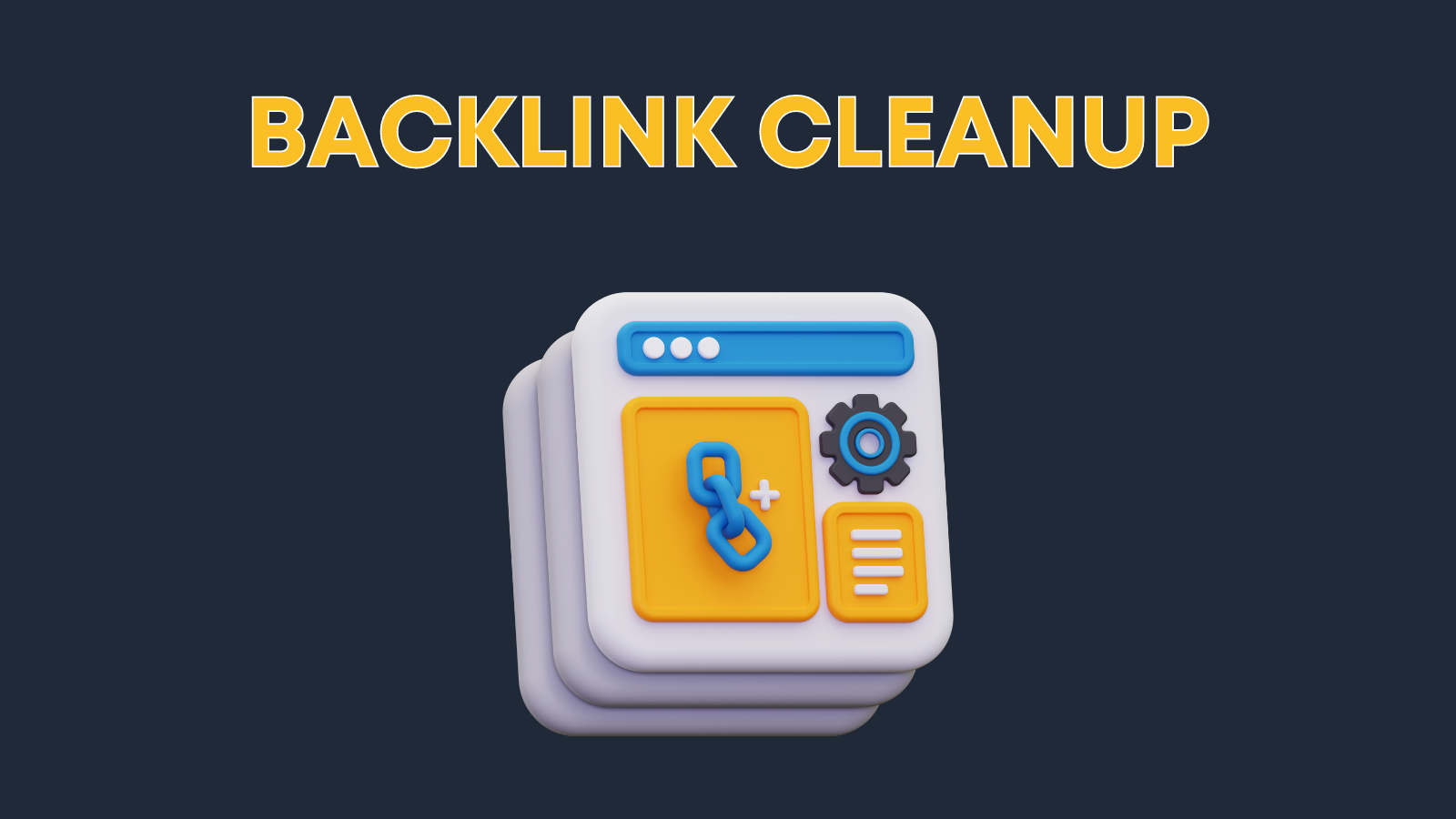
Backlink Cleanup
If you want to clean up toxic backlinks, you have come to the right place.
Our team at FatRank have helped hundreds of websites remove toxic & harmful backlinks for websites over the years.
Contents
Gradual Backlink Cleanups
Gradual backlink cleanups for most websites are necessary. Every website will naturally acquire toxic backlinks as soon as it gets some form of traffic over time.
If your website is growing every month/ year in traffic, we highly recommend you clean your backlinks up regularly. Most blog owners leave a backlink clean-up too late and decide to hire our team after the website has dropped in rankings.
You would never put petrol in a car after you’ve finished the petrol tank, so why have that approach when cleaning your links?
How To Audit Backlinks
There are various tools that our team use for cleaning backlinks. We use all of them to get the best result possible.
1. LinkResearchTools
LinkResearchTools is by far the best tool for disavows as it considers various metrics such as:
- Toxicity
- Trust
- Power
- LinkGraph Score
- Link Velocity
LinkResearchTools is the most expensive tool on the list. However, it is necessary if you intend to do disavows correctly.
2. Majestic SEO
Majestic SEO is another good tool for collecting links and looking at what links could be spammy.
Majestic SEO gives you a good insight into what links are trustworthy and also shows spam scores. The one downside to Majestic SEO is that it digs into fewer metrics than LinkResearchTools.
3. SEMRush Backlink Audit Tool
SEMRush Backlink audit tool is good; however, it needs more metrics compared to Majestic SEO & LinkResearchTools (LRT).
In our experience, we have seen many website owners disavow good links because SEMRush said the link is spammy.
What our team typically does with SEMRush is export all the backlinks from SEMRush and import them into LRT; this is the best way of getting results and recovering lost website traffic.
4. Ahrefs
Our team doesn’t recommend using Ahrefs for disavows. Again website owners, in our experience, have disavowed low DR links because they are looking at a single metric and end up doing more harm than good to their website.
If you are doing disavows using aHrefs, then I strongly suggest you hire a professional, as you are very likely to do a lot of harm to your website.
Identify Bad Backlinks
Here are some metrics that we look at when identifying bad backlinks:
Paid Links
Over the years, Google has become smart when it comes to 0 valuing links; however, that doesn’t mean that the toxicity of that link doesn’t pass through to your website. A lot of website owners will purchase a load of links from guest post farms, and doing so damages their website rankings.
What is a Guest Post Farm?
A guest post farm is a website built to sell guest posts; This is against Google’s T&Cs.
High Spammy Backlinks
Sometimes, the backlinks you are acquiring could be links from high-toxicity websites. This happens if the site you acquired the link from is getting spammy tier 2 links built to power up other guest posts.
Turning that guest post site into a toxic/ spammy domain.
Compare Competitor Backlink Profiles
In some cases, toxic links are necessary for your website. Hear me out before you go and spam your website with cheap links.
In certain industries, such as gambling, CBD, and Porn, you have a higher toxicity threshold because your competitors are naturally acquiring spammier domains, so Google understands that the average is higher in certain industries.
Links with over-optimized anchor texts
Over-optimised or spammed anchors can run pages of your site into the ground. It would be best if you looked at what your competitors have. For their anchor text ratio and follow the average. Just building links can tank your page.
Identify Opportunities While Cleaning
Sometimes, when disavowing a link, you need to look at opportunities and figure out if you need to disavow a highly toxic, high-trust link. Every website can handle some toxicity, so you need to pick your battles wisely, disavow useless domains, and not pass any power or trust to your site.
Aggregator Links
There are various aggregator links which mass scrape websites for images, content, and videos and will link back to websites; This is one form of spammy backlinks; many websites acquire these links and drop rankings.
Google Disavow Tool
Once you have a list of domains you want to disavow, you need to head over to Google Search Console to inform Google about the toxic backlinks you have just disavowed.
Disavow The Remaining Bad Backlinks
Once you are logged into Google Search Console, we need to inform Google about our bad backlinks, so head over to the disavow tool and upload your file.
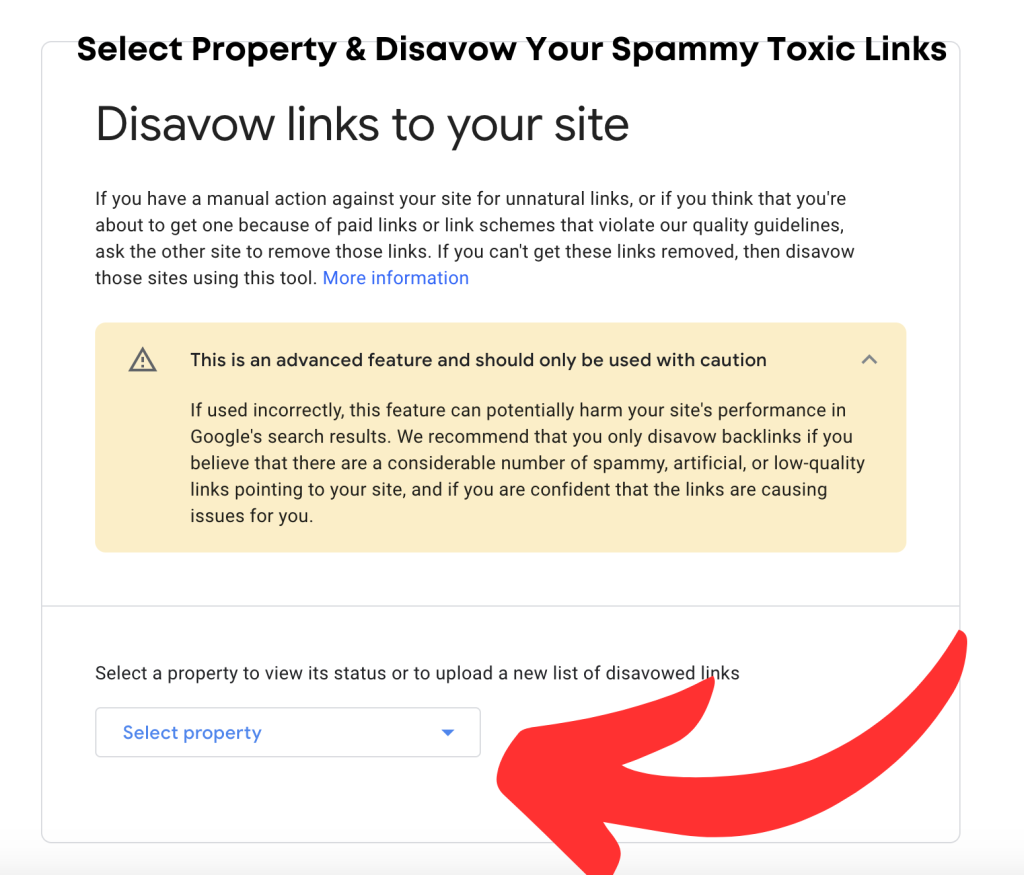
Disavow Risky Links
Once you have submitted your risky backlinks to the disavow, we highly suggest you get a backlink rejuvenation for your website.
Currently, your website is on its deathbed.
You don’t want to feed it more toxic food, so we need to play it carefully and acquire high trust & high power backlinks pointing to your website.
Frequently Asked Questions Regarding Toxic Links
Here are some FAQs regarding Toxic Links & Backlink Cleanups
Why is It Important to Remove Bad Backlinks?
You must remove bad backlinks as they could hold your website back from performing as best as possible. Sometimes, we recommend bigger websites to run a disavow on their website frequently.
What are toxic backlinks?
A toxic backlink is a web link which points to your website that causes more harm than good, Search engines penalise you for having links like these pointing to your website, and it can hold your website back from earning more traffic.
How do I know if I need a link audit?
If you have a website which has links pointing to it or if you have suddenly dropped in rankings, you may need a link audit performed on your website. This can help you regain traffic in search engines.
How does link cleanup or removal work?
A link cleanup removes toxic links / spammy links pointing to your website. It also informs Google to ignore these links when looking at your website.
What is a negative SEO attack?
A negative SEO attack is performed by someone who wants to do harm to your website and try to get your website penalised by Google. If you are experiencing this, we suggest you speak to our team as we can help.
How can I find out if my website was penalised by Google?
Occasionally, Google will email you regarding a manual action mentioning that Google has penalised your website. In other cases, you might have had a dip in organic rankings, and we suggest you reach out to our team to help find the root cause.
All SEO Audit Posts
Check out all the SEO Audit posts from the FatRank team:
- Backlink Cleanup
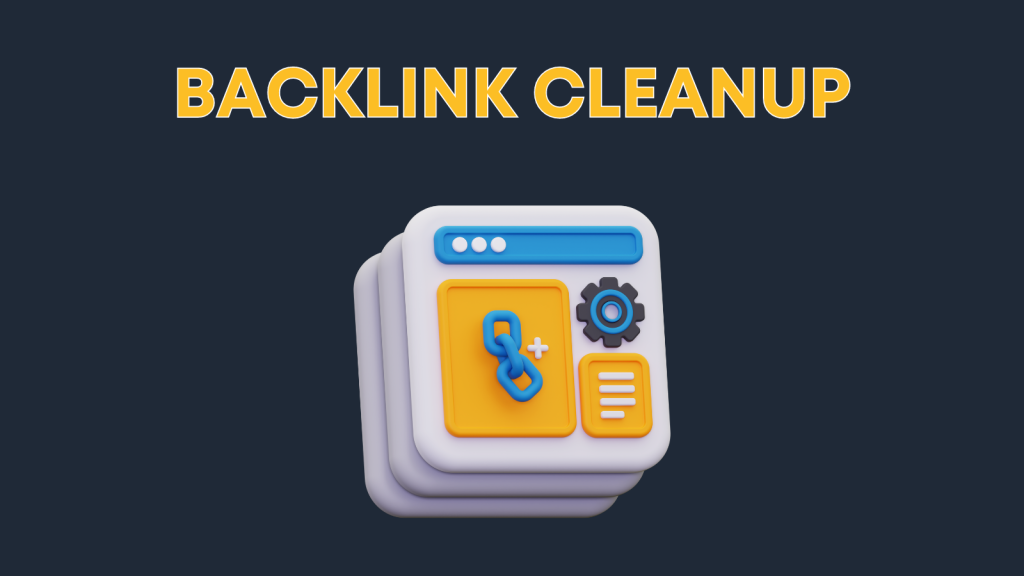
- Google Disavow Tool SEO
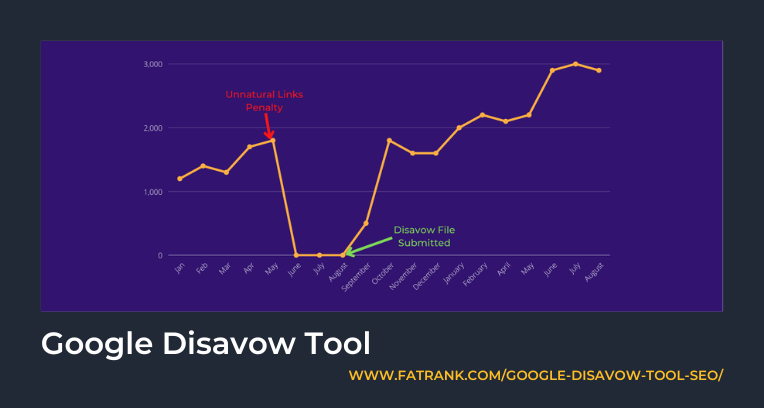
- How To Recover From A Google Organic Traffic Drop
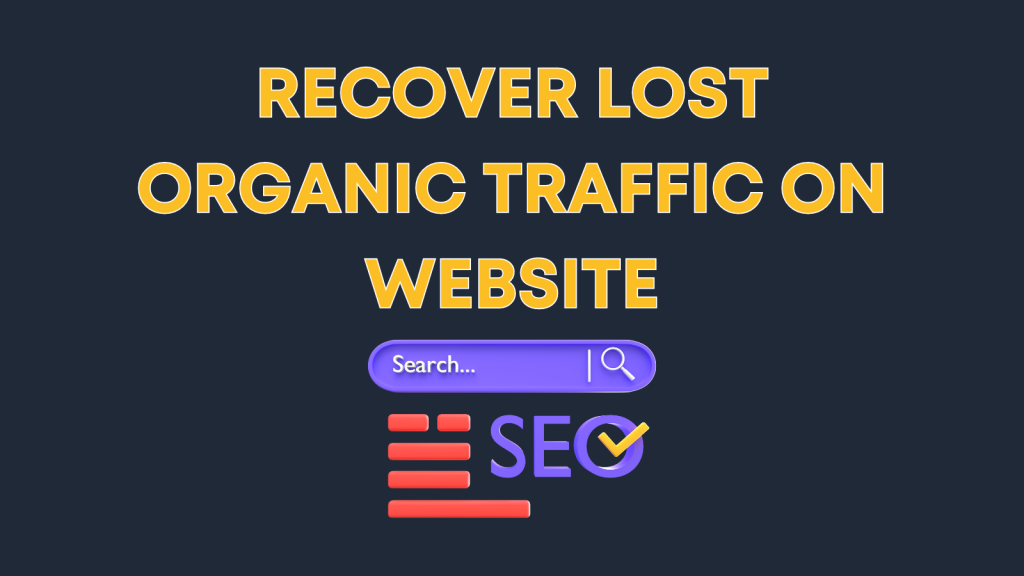
- Link Audit Service
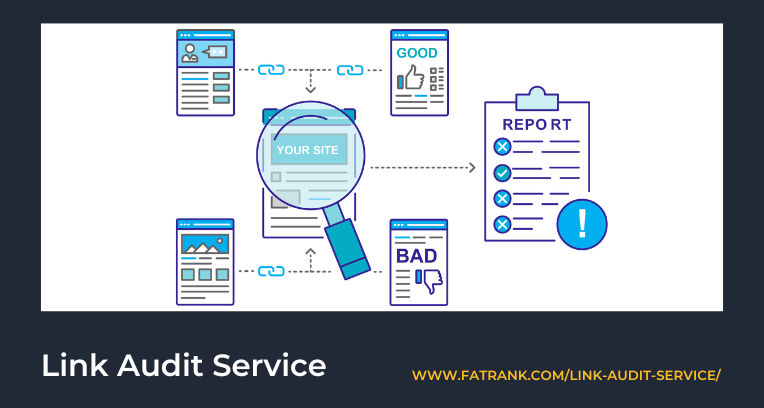
- Link Detox Rules
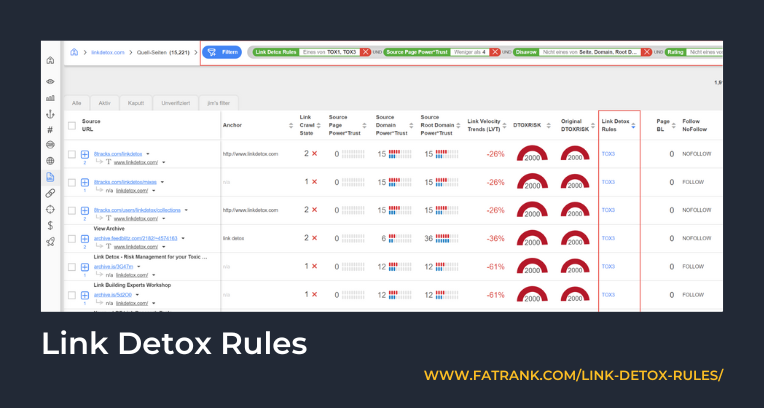
- Manual Action Removal
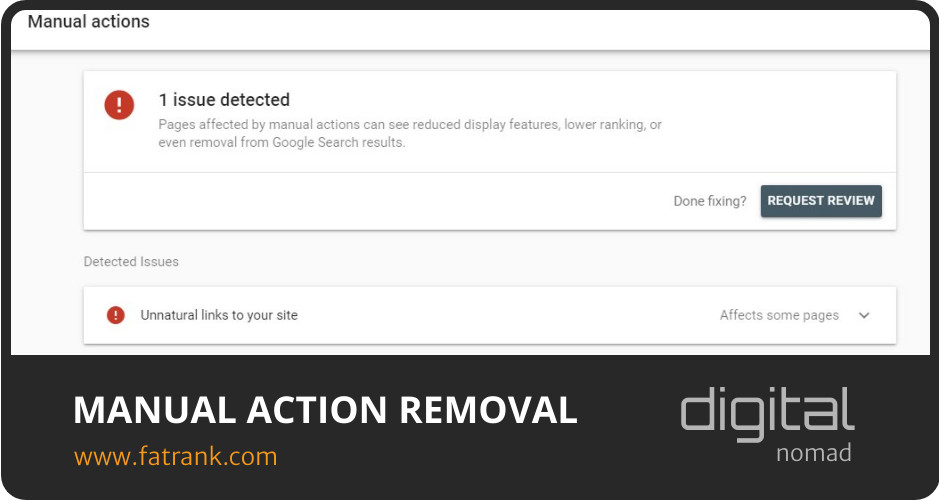
- SEO Content Audit Guide
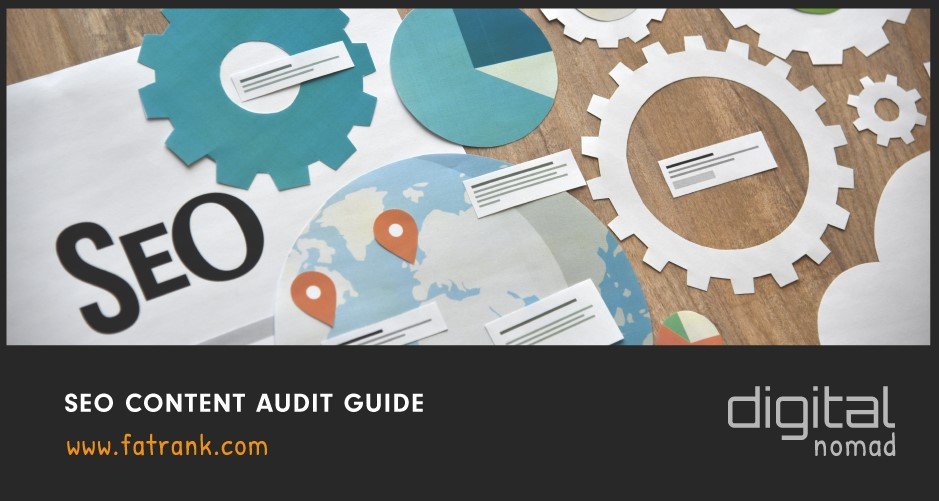
- Technical SEO Checklist
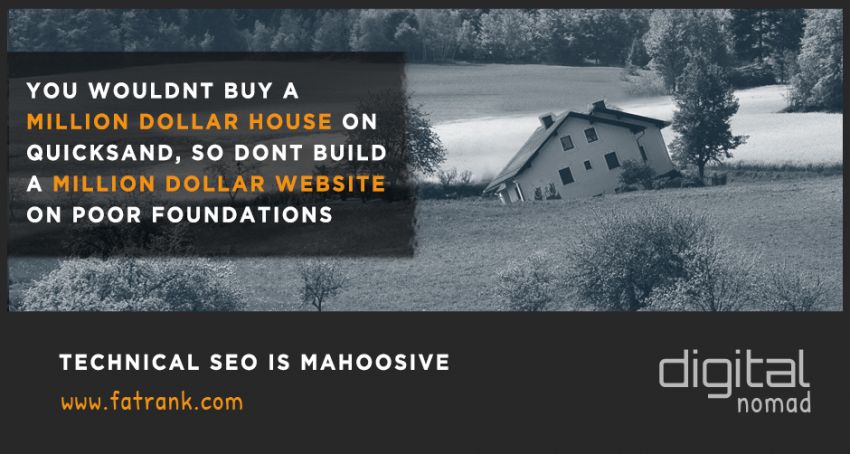
- Thin Content With Little or No Added Value
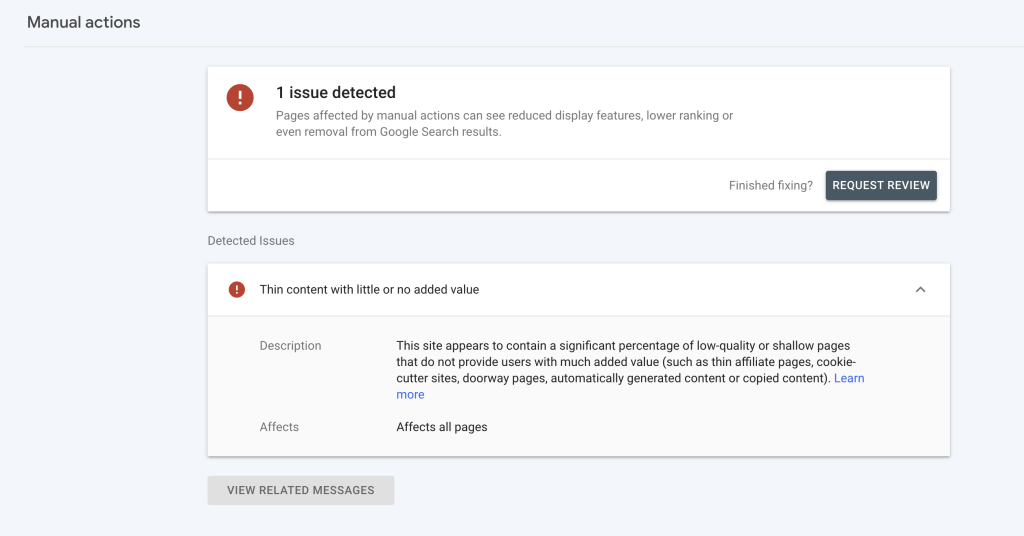
- Types of Google SEO Penalties
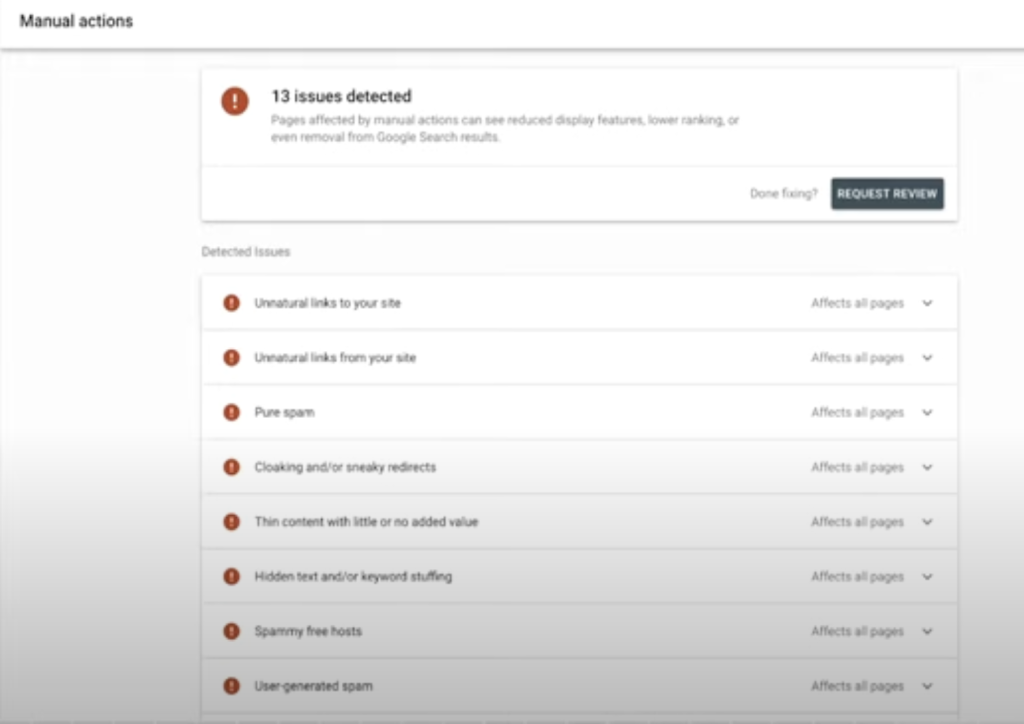

About FatRank
Our aim to explain and educate from a basic level to an advanced on SEO and Social Media Marketing.
- Triggering Google Suggests
- Online Reputation Management Quotes That Highlight Why Your Brand Perception Matters
- Trust-Based Revenue Share Lead Generation Model
- Online Reputation Management Agencies
- Best Online Reputation Management Consultants
- The Complete Local SEO Playbook 2025
- iGaming SEO: The Truth About Advanced SEO for Online Gambling

